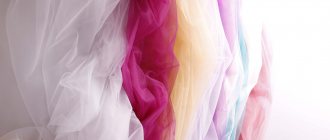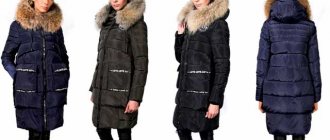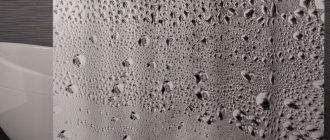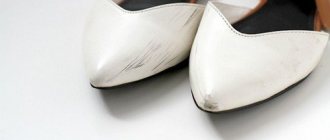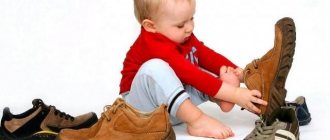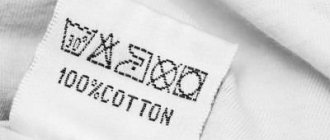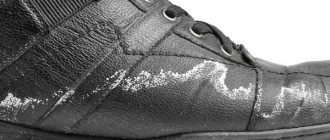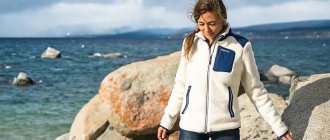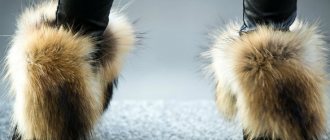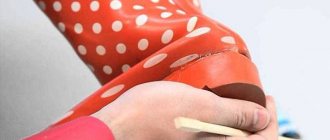Textile shoes have long and reliably settled in the wardrobe of almost every person . One of its most popular and practical types is probably sneakers. Shoes, slippers, sneakers, moccasins, ballet shoes, sandals, sandals, felt boots - all these are types of textile shoes.
The origins of the production of shoes from fabrics begin in ancient times. Depending on the regions of growth, people used strong plant fibers of flax, wool, cotton, and hemp. Quite rough but durable materials were obtained from them. Often such fabrics were used to make ship sails. Having realized that the material is durable and can withstand testing under the influence of natural factors even on the high seas, people began to make shoes from it.
The popularity of such products does not fade even today . Nowadays, the production of fabric shoes is no longer limited only to plant fibers. It is made using mineral, artificial and animal fibers. Products made from synthetic fabrics are quite durable and can last for many years. Thanks to the modern variety of color and texture options, manufacturers create a wide variety of shoe models for children and adults.
Shoe upper materials
We will begin our review of the materials used for shoe uppers by listing the types of leather.
- Box calf
is a smooth full-grain calf leather (that is, with open pores), uniformly dyed in a tannery with penetrating dyes (aniline dyes). The degree of endurance and wear resistance is quite high; breathability is excellent. Box calf can be used for both formal and informal shoes. - Museum calf
is a smooth full-grain calf leather, unevenly dyed in a tannery with penetrating dyes. Slightly spotted, with an interesting and extraordinary appearance. The degree of endurance and wear resistance is quite high; breathability is excellent. The level of formality is lower than that of box calf. - Crust
is a smooth full-grain calf leather that is dyed only at the shoe factory. Often provided with an interesting patina with color nuances and transitions; There is no such thing as truly monochromatic. The endurance level is lower than that of box calf and museum calf because this leather is more vulnerable to heavy exposure to moisture and reagents. Durability, however, can be excellent, as can breathability. The level of formality varies from very low to very high, although not maximum. - Pebblegrain, Scotch grain
- grainy calf or cow leather, which is dyed at a tannery and complemented with a special pebble print (the print is applied with a special press). Sometimes this skin is additionally fattened. The degree of endurance is high. Breathability varies - it can be excellent, it can be mediocre. The level of formality is low. - Pull-up aniline
- calfskin or other leather, tanned with penetrating dyes and additionally burnt. It has a characteristic informal appearance and quickly acquires a peculiar patina. The degree of endurance is high. - Oiled, Waxy, Wax calf, Chromex
- oiled or waxed calf or cow leather, tanned. It has a very high degree of resistance to external influences. Air permeability varies, but is always lower than, for example, box calf. The level of formality is low. - Bookbinder/Polished/Hi-Shine
- calf and cow leather with a glossy surface and closed pores. The level of formality is high, although today this kind of leather is also used for sewing completely informal shoes. Air permeability leaves much to be desired. The level of endurance can be good, but scratches and abrasions cannot be removed from such leather; In addition, strong creases can form on it, and it can be harsh. Additionally, we note that sometimes the term Polished is applied to other types of leather. - Patent
- patent leather. Used to make the most formal shoes, worn with tuxedos and tails. The quality varies quite a bit. Air permeability usually leaves much to be desired, and sometimes it is completely zero. There is no clear distinction between patent and bookbinder; The pores in both cases are closed and the surface is shiny, but patent leather is usually glossier than bookbinder leather. - Cordovan
is leather (or, more precisely, membrane) from horse croup that undergoes a long vegetable tanning process. It is distinguished by very high strength, durability, wear resistance, but at the same time, on average, it is more expensive, harder and stiffer than calfskin, and is also less suitable for warm and even hotter weather. Cordovan is prone to the formation of characteristic wavy creases. It can be used for the production of both formal and informal shoes.
In addition, the skins of crocodiles, snakes, ostriches, sharks, elephants, stingrays, lizards and other exotic animals can be used to produce shoe uppers. We talked about them in more detail in a separate article, but here we’ll just note that in stores you can often find shoes made of calf or cow leather with exotic prints... and that, as a rule, it’s worth overpaying for models made from real exotic skins only if you really like them a lot. The degree of versatility of such shoes often leaves much to be desired.
Berluti oxfords in crocodile leather
Now let's move on to a brief overview of fleecy materials obtained from animal skins.
- Suede
- suede. There are two main types of it: full-grain suede (reverse suede) and split suede. The first option is valued significantly higher than the second and costs significantly more. As a rule, full-grain suede is more pleasant to the touch and more noble in appearance. Durability is high for both options. The degree of endurance can be quite decent if you treat the suede with a special water-repellent impregnation. - Nubuck
- nubuck. While the face of suede is the “inner” side of the hide, the face of nubuck is the “face” of the hide, which has been heavily sanded. We talked in detail about the difference between suede and nubuck in a separate article. - Oiled nubuck
- greased/oiled nubuck. More resistant to external influences than regular nubuck.
In addition, sometimes the upper of the shoe is made of textiles - cotton, linen, synthetic or wool (for example, you can find models made partly from tweed or wool flannel). The degree of practicality of such options can hardly be called high, and in terms of durability, they are usually also inferior to good natural leather. Textiles are especially often used to make the uppers of sports and indoor shoes. In some cases, it is used in combination with leather or leatherette.
Tall boots with tweed inserts
Let us add that rubber is used to produce the upper of some informal models (for example, slates); In addition, some shoes (usually women's) today have plastic uppers. In the lowest price segment, models with leatherette uppers are common, the quality of which varies widely. The best examples of leatherette are durable and able to “breathe”, but are still valued lower than high-quality genuine leather. They do not acquire a beautiful patina.
Finally, we need to mention tarpaulin - an artificial material, which we talked about in detail in the article about tarpaulin boots. Classic tarpaulin is a rough budget fabric, impregnated with special synthetics, complemented by a leather-like print and maintaining breathability (albeit within rather limited limits). Modern tarpaulin is usually made from non-woven materials.
Cons of textile shoes
- Gets wet quickly and easily . Do not wear it in the rain, walk through dew or snow. It is usually used in warm and dry seasons.
- Not durable . As a rule, such shoes usually last for 1-2 seasons. If you wash or dry it incorrectly, it can shrink, fade, or come apart at the seams.
- Easily gets dirty , especially when wet.
- Loses its attractive appearance faster.
- Has no resistance to cold.
Perhaps these are all the main shortcomings. We can say that these are rather simply the physical characteristics of the products in question, depending on weather conditions and proper operation.
Sole materials
The soles of dress shoes and boots are made of either leather or rubber. Leather soles are the most traditional choice; they are considered more formal than their rubber/synthetic counterparts while still being suitable for both formal and informal footwear. In addition, leather soles have the ability to “breathe”, and on the store shelf they look noble and sometimes very impressive. However, after the first wear, the leather sole acquires a huge number of abrasions and scratches.
Leather sole on Berwick shoes
In addition, leather soles are not suitable for walking on slippery surfaces and are very vulnerable to the effects of water - you definitely shouldn’t walk through puddles in shoes with leather soles. If you want to wear shoes with such soles in rainy and snowy weather, you need to put rubber preventatives on the soles - almost all shoe shops provide this service, but we recommend contacting the best and most trusted ones with a good reputation. Prevention not only provides protection from moisture, but also protects the soles from premature wear (however, to prevent premature wear of the very front parts of the soles, special metal overlays - “jambs”) are better suited.
Metal overlay on leather sole
It should be added that in the assortment of some brands there are shoes with leather soles with factory-installed rubber prophylaxis (sometimes, however, shoes with rubber soles with decorative leather inserts can be confused with such models). In addition, there are double leather soles, which are more resistant to external influences than single ones, soften the impact of stones when walking and provide greater thermal insulation. It is also worth mentioning oak bark tanned leather soles - connoisseurs prefer them because they are lighter, more durable and wear-resistant compared to ordinary leather soles. True, they cost noticeably more.
High boots with double leather soles
We talked in more detail about leather soles in general here, and about oak bark tanned leather soles and one of their most famous manufacturers (the J. Rendenbach tannery) in this material. You can read about double leather soles here.
Rubber and synthetic soles are usually more practical than leather soles. They are very different. The soles of the British brand Dainite are excellent for both formal and informal shoes, as well as the very similar soles of the Italian brand Sestriere and the corresponding model from the Italian company Vibram. They are quite thin, wear-resistant, easy to care for; Their only drawback is poor stability on slippery surfaces.
The soles of the British brands Ridgeway, Commando, as well as some Vibram soles are more stable and very practical. Their appearance, however, is less formal - for example, Commando soles should definitely not be combined with business suits. Crepe soles are also unofficial. As a rule, they are lightweight and comfortable, but their quality, wear resistance and degree of stability on slippery surfaces vary markedly from manufacturer to manufacturer.
Crepe sole
A detailed article about sole options for classic men's shoes is available at this link. Here we will add that mass-market boots and shoes are often equipped with fully synthetic soles made of polyurethane (PU), thermopolyurethane (TPU), ethylene vinyl acetate (EVA), polyvinyl chloride (PVC) and thermoplastic elastomer (TRP). Polyurethane is sometimes combined with thermopolyurethane. Thermoplastic elastomers and thermopolyurethane are well suited for winter. Polyurethane and thermopolyurethane are characterized by high wear resistance, and thermoplastic elastomer, ethylene vinyl acetate, and polyurethane have good shock-absorbing properties. Ethylene vinyl acetate and thermoplastic elastomer are famous for their flexibility, as well as polyurethane (but the latter - not in the cold).
Advantages of textile shoes
The convenience and practicality of textile shoes is valued by many, however, like any product in the world, these products have their own advantages and disadvantages. Let's try to consider the main advantages:
- Knows how to “breathe” . This only applies to shoes made from natural fibers. The physical properties of natural fabrics allow air to circulate freely, and accordingly, feet in such products will not sweat. This is one of the main criteria that mothers pay attention to when choosing fabric shoes for children.
- Convenience . The softness and elasticity inherent in the fabrics allows the products to take the shape of the leg. Great for sports – sneakers and sneakers are among the most popular types of footwear made from fabrics.
- Lightness . In terms of weight, textile shoes are much lighter than leather products. It will be comfortable for long walks.
- Hygroscopicity . Shoes made from natural cotton fibers have the ability to absorb up to 40% moisture and remain dry. The best option for people who have problems associated with excessive sweating of the feet.
- Does not cause allergies . Also refers to natural textiles, especially fabrics made from plant fibers. This material does not cause irritation, allergies or other skin reactions. Suitable even for babies' sensitive feet.
- Easy to care for . Easy to clean, can be washed in a washing machine on the appropriate cycle. Dries quickly, does not require treatment with shoe protective agents (with the exception of some types, for example, artificial suede)
- Price . When compared with leather shoes, textile shoes are significantly inferior in price. However, if it is made from completely natural fabrics, then it will not be very cheap. But, nevertheless, it is still a more profitable option.
- Never goes out of style . Thanks to designer inventions, the range is constantly changing and growing.
As you can see, there are quite a lot of advantages. That is why these products are in constant demand and are always presented at retail outlets in a large assortment, both for adults and for children.
Despite many advantages, there are also disadvantages to these types of products. Let's look at them below.
Materials for insoles and inner soles
Inner soles (main insoles) are made of genuine leather, leather cardboard and cardboard (genuine leather; leatherboard; cardboard / paperboard). Leather is highly valued, especially vegetable tanned leather that has undergone the oak bark tanning process already mentioned above. They don’t put leatherette soles on really high-quality shoes, but this is not the worst option. Inner soles made of cardboard are a sign of frankly low-level shoes.
Leather insoles
The insoles are usually made from natural vegetable or chrome tanned leather. The first option is the best because vegetable tanned leather is hypoallergenic, very hygroscopic and hygienic. It is important that the pores of the skin of the insoles are open, because otherwise the insoles will not breathe well (or not at all). Insoles made of synthetic materials or textiles are an indicator of low-level shoes.
We talked in detail about the materials for insoles and main insoles in a separate article.
How to clean and care
When worn every day, textile shoes quickly wear out and get dirty, so they require proper care.
If it is heavily soiled, you can use a washing machine, but it is better to wash textile shoes by hand. Wash these shoes in warm water, adding a cleaning agent in advance. Gently move the brush over the fabric of the shoe without deforming it. Leave the product to dry away from heat sources, giving the shoes a natural shape so that they do not become deformed. Allow the product to dry on its own.
Materials for linings
The linings of high-quality shoes are made from vegetable-tanned leather or chrome-tanned open-pore leather. The first option is usually valued slightly higher. Shoes that are not of the highest quality may be lined with closed-cell chrome-tanned leather, which is not hygroscopic and does not “breathe” well (and sometimes does not “breathe” at all). Naturally, this option is less preferable.
Church's Loafers with Leather Lining
In addition, sometimes natural and artificial fur are used for lining, as well as textile materials: linen, cotton, synthetics. Textile materials are valued lower than genuine leather, but at the same time, a linen lining is not an indicator of low-level shoes. Synthetics today come in different forms, and high-tech versions can be practical and comfortable, but it is not customary to use synthetics in classic men's shoes. Fur is used to make linings for winter shoes and boots.
Finally, we note that the absence of a lining is not an indicator of poor quality shoes. Unlined models are usually a very good choice if you are looking for shoes for warm or even hotter weather.
Ugg boots - house boots for women's legs
Very comfortable and stylish shoes for home use. It is sewn mainly from warm materials, as it is designed exclusively for the cold season. UGG boots can be worn with a robe, suit and even a house dress. They may be lined with fur or other lining. Knitted patterns are also popular today. Ugg boots, in addition to looking amazing, also provide excellent warmth and provide unique comfort.
If someone is tired of ordinary house slippers, then you can find many analogues and replacement options made from textiles. The main thing is that you feel comfortable in them, and that the shoes correspond to the temperature in the room.
Materials for instep supports (gelenki)
Arch supports (gelenki) are elements hidden in the depths of the shoe that support the arch of the foot and resist deformation of the shoe. Here we note that metal, wood, plastic, fiberglass and genuine leather are used for their production. Some companies do without arch supports at all (a classic example is the American company Allen Edmonds).
Steel instep support in Alden shoes
Heel materials
High-quality classic shoes and boots are equipped with stacked heels, consisting of several layers (flicks; heel lifts). High-end shoes are distinguished by stacked heels with fleeces made of high-quality genuine leather. Some manufacturers use leather cardboard for fleeces, which is valued lower, looks worse and is less reliable. In addition, rubber elements can be found in the stacked heel. Let's say the bottommost layer is either completely rubber or partially rubber. Detailed information about composite heels can be found here.
Leather heels made of several layers
Let us add that mass-market shoes and informal shoes of various levels (including high ones) can be equipped with heels that form a single whole with the sole... or they do not, but are made of the same material. Such materials can be polyurethane (PU), thermopolyurethane (TPU), natural crepe rubber, ethylene vinyl acetate (EVA), thermoplastic elastomer (TPE).
What to wear with
As we mentioned earlier, textile shoes can be safely combined with any clothes from your wardrobe, the main thing is to understand what event you are choosing your look for.
So, for a casual outfit, the classic combination of blue jeans with a white T-shirt and white sneakers is suitable; for an office look, you should choose a strict black suit consisting of a blazer and jacket, a black knitted top and wedge shoes, and for an evening out we recommend wearing a light, flowy mini. a dress with a floral print that is trendy this season and sandals also with wedges.
Materials for back seals
Heel counters/heel stiffeners allow the back of the shoe to maintain its shape for a long time and give it proper rigidity. They are hidden between the outer part of the upper and the lining of the shoes, and for their production genuine leather (genuine leather), leatherboard (leatherboard) and thermoplastic with textiles (celastic) are used. Leather seals are valued higher than seals made of leather cardboard, and those, in turn, are higher than thermoplastic options. The point here is not only the cost of the seals themselves, but also the features of working with them. Due to the nature of shoe production, installing leather seals requires more effort than installing their leather counterparts, which, in turn, are more difficult to install than thermoplastic seals.
Leather back seals
If the back seal made of thermoplastic or leather cardboard fails (breaks), then it cannot be “fixed”. The leather seal, however, can be repaired and restored. In addition, the leather adapts best to the shape of the heel over time; leatherette is somewhat worse, and thermoplastic is even worse. As a result, shoes with thermoplastic back seals, all other things being equal, may be less comfortable to wear than shoes with leatherette and leather back seals. For some people, the difference is significant and sometimes even critical, although it is worth keeping in mind that the degree of hardness and comfort of thermoplastic seals varies quite widely. In addition, we note that even in expensive shoes you can find thermoplastic seals, and genuine leather seals are found only in shoes costing more than 400 euros per pair.

